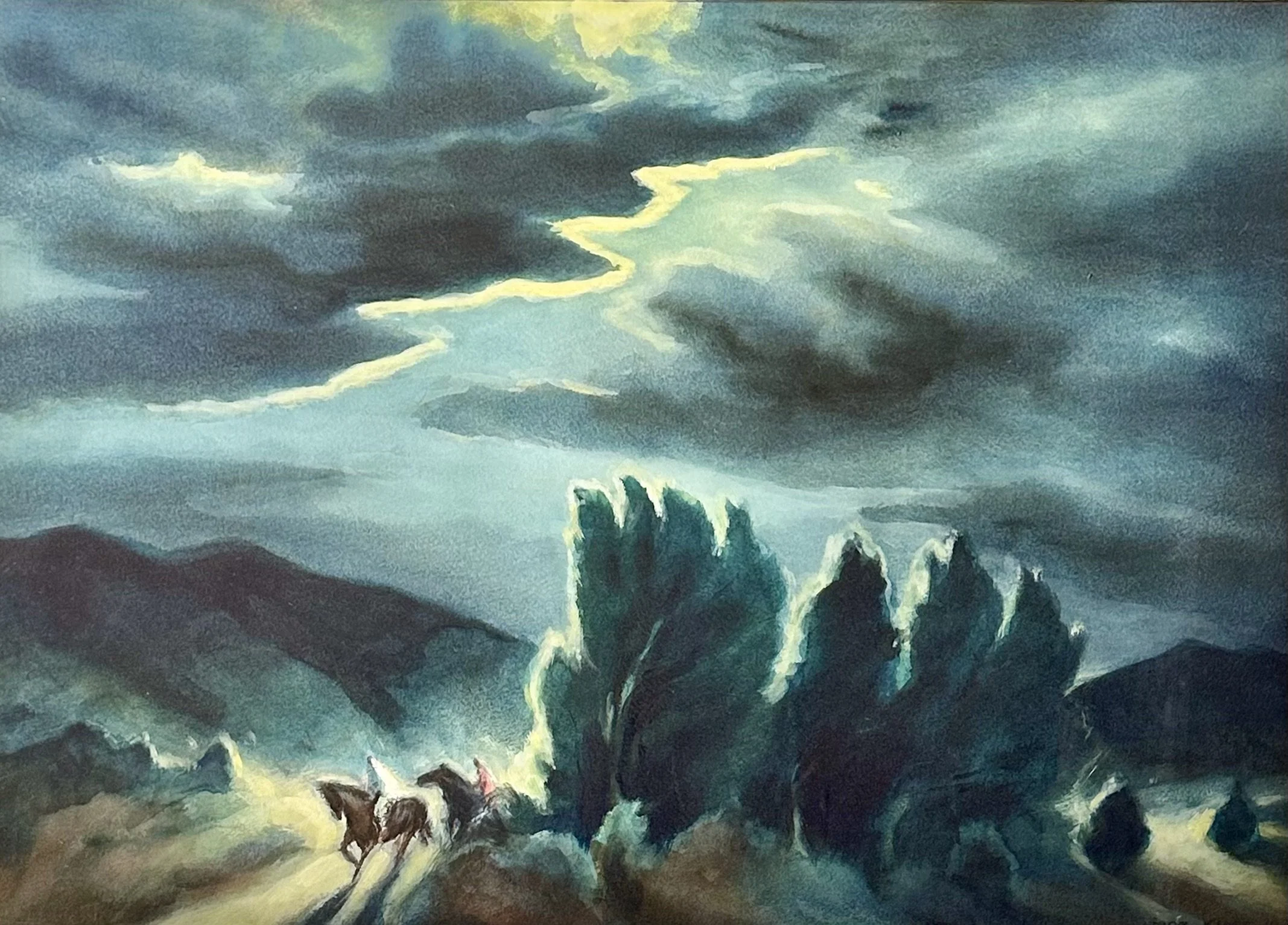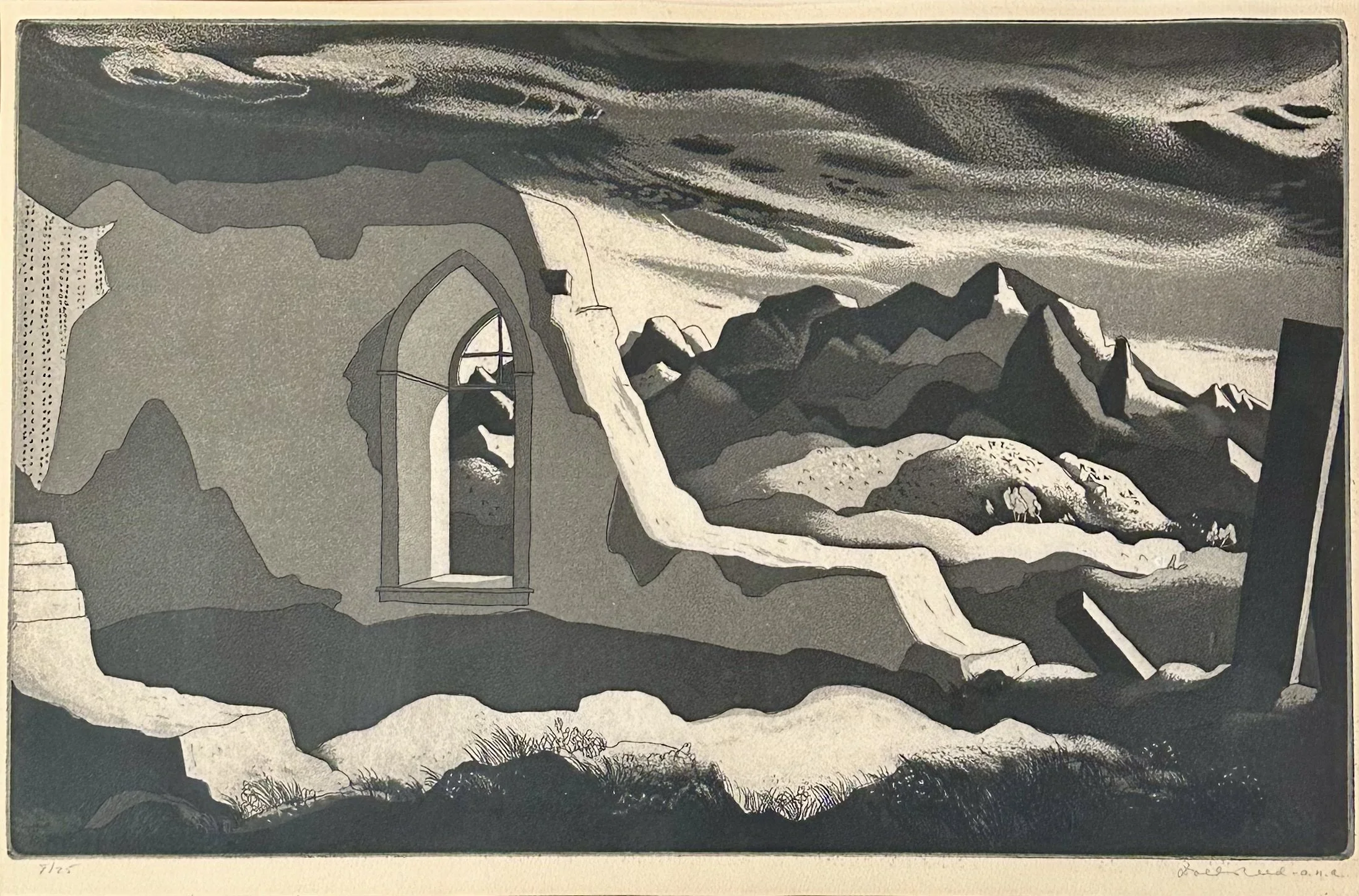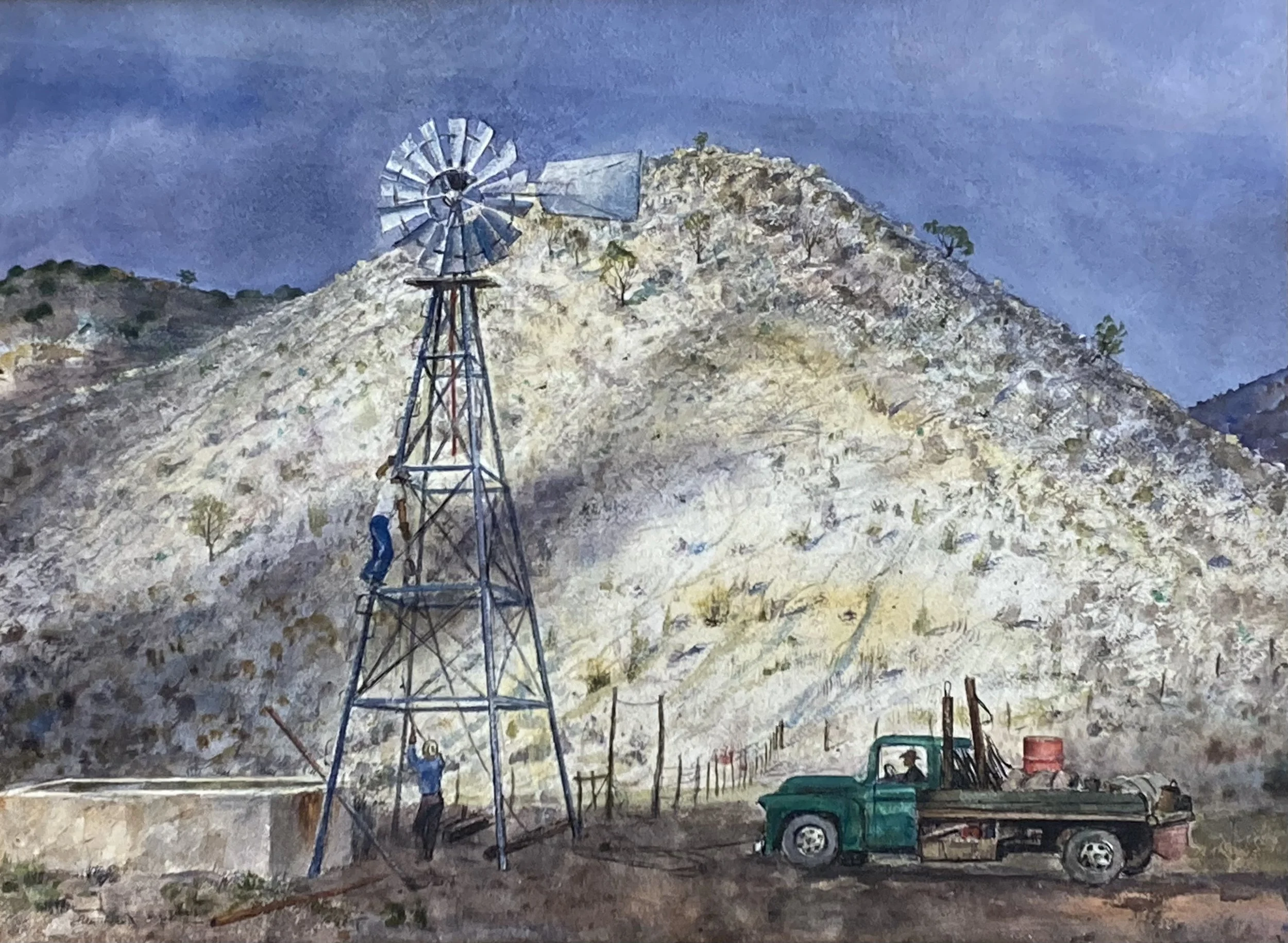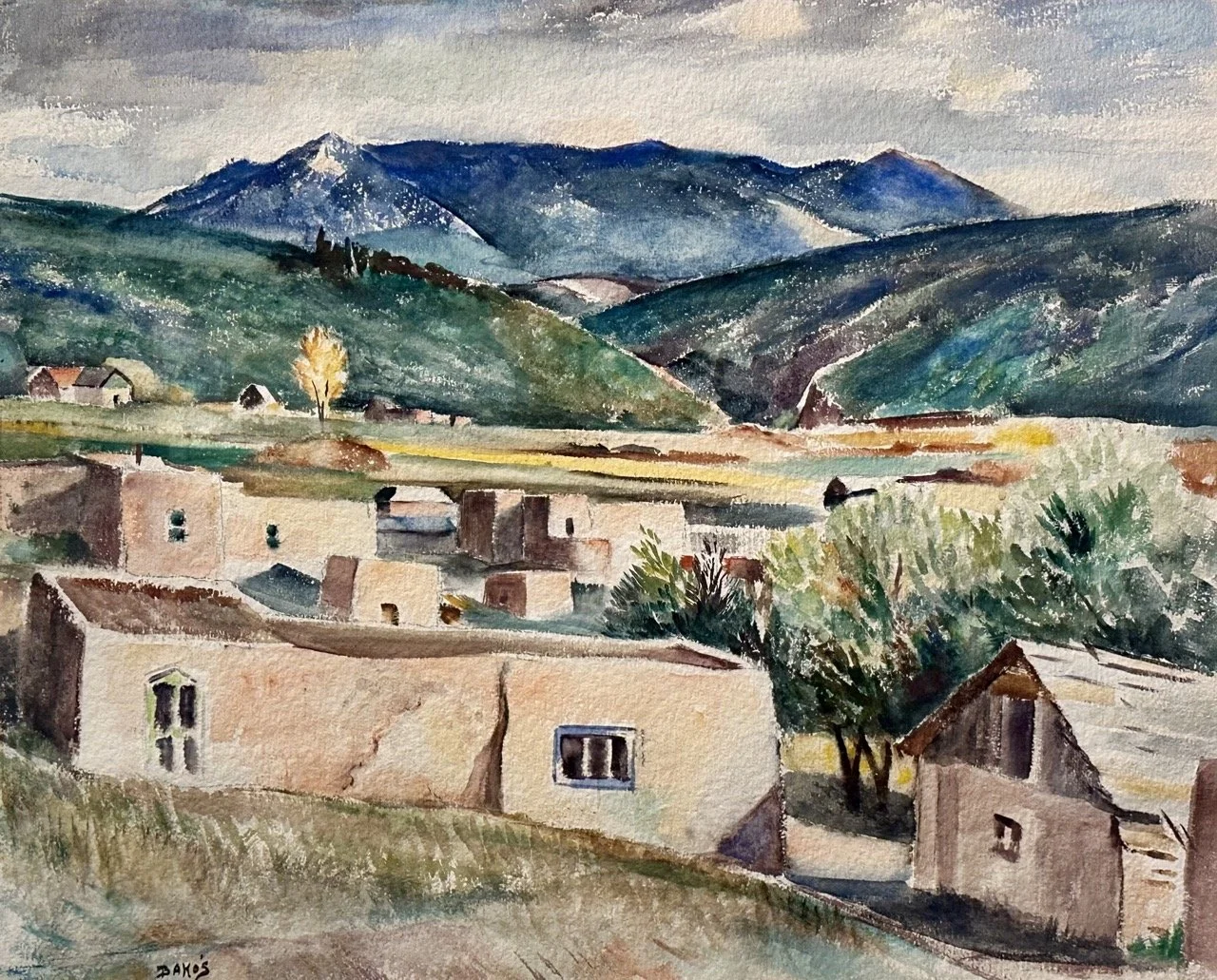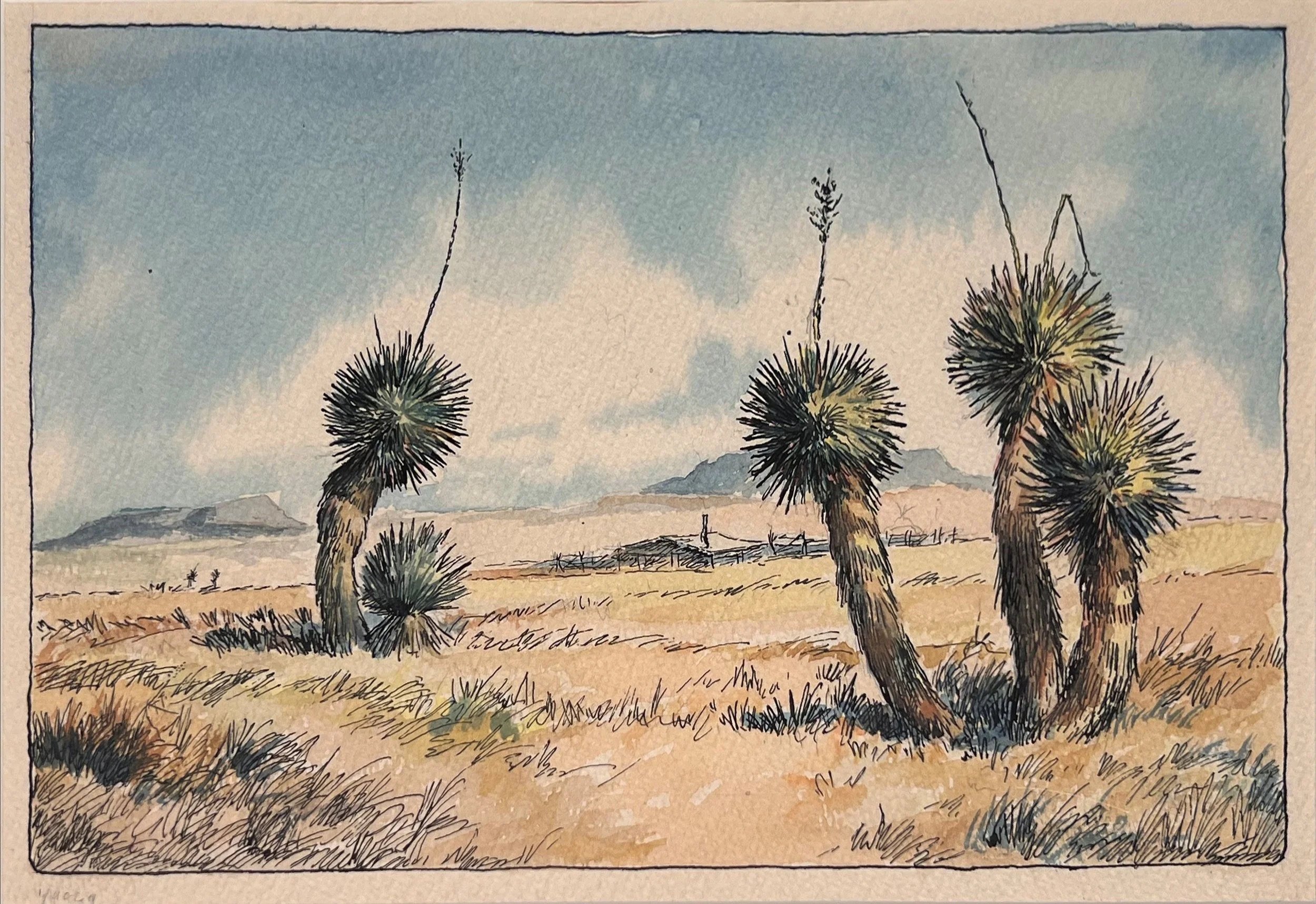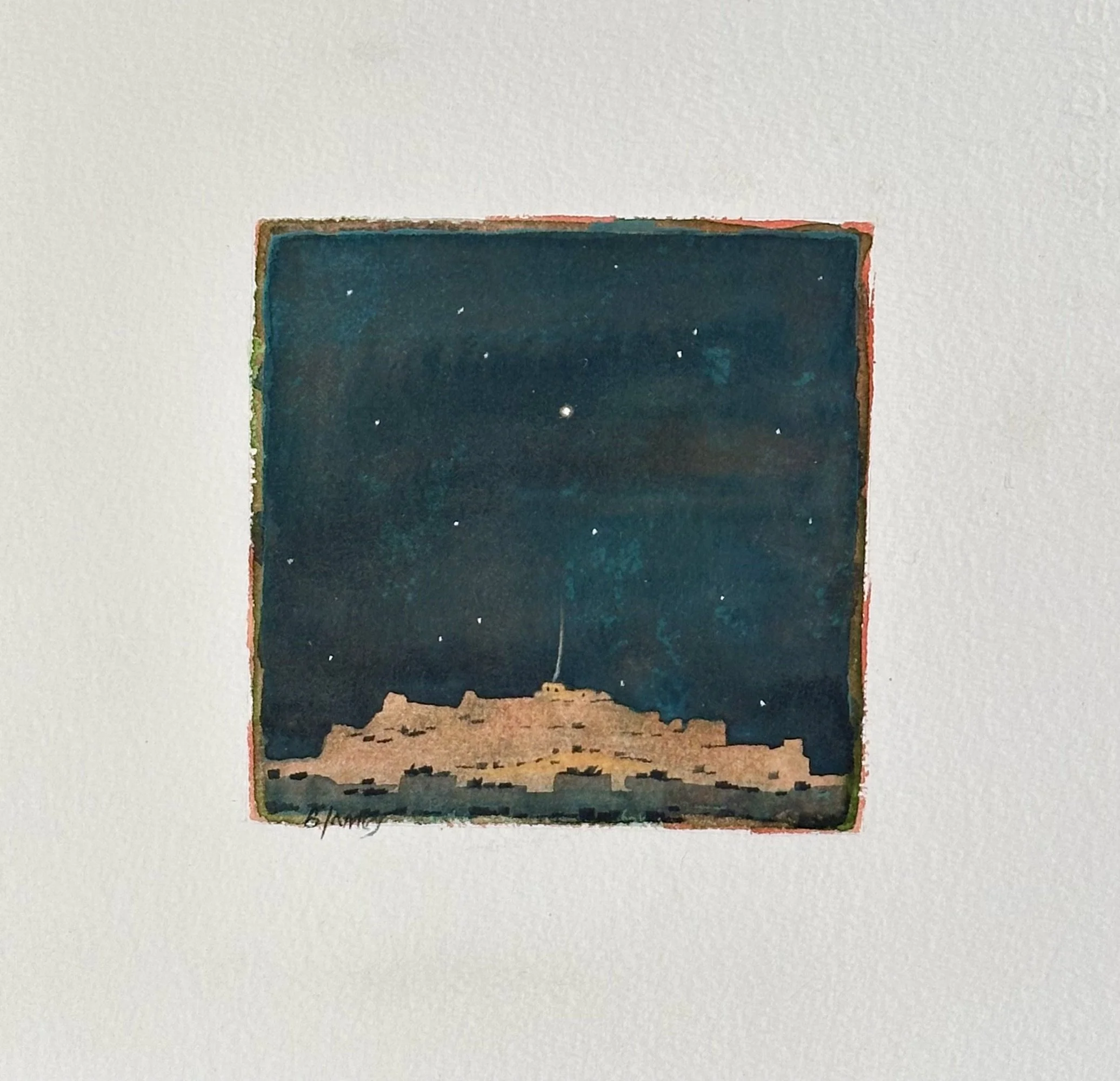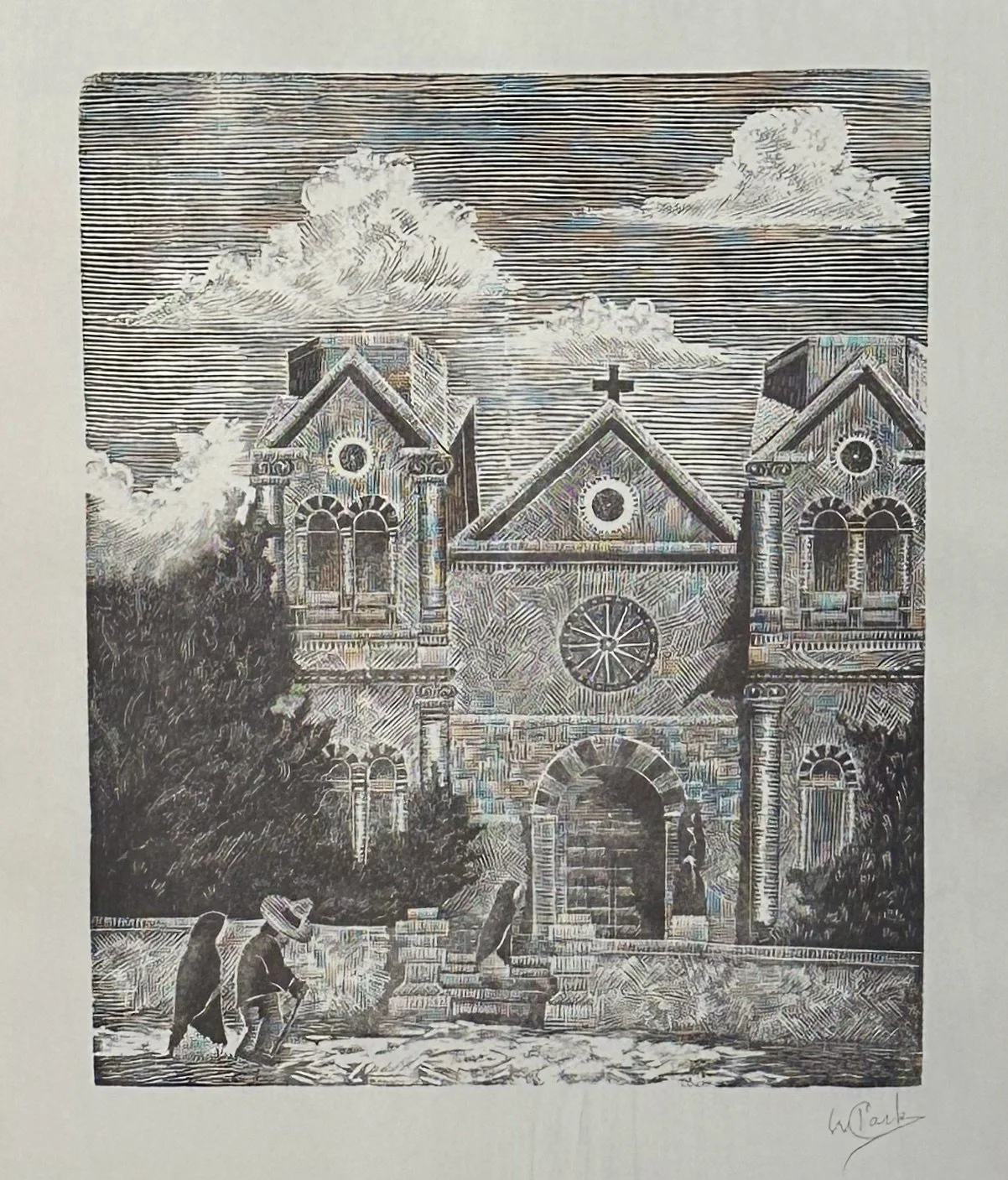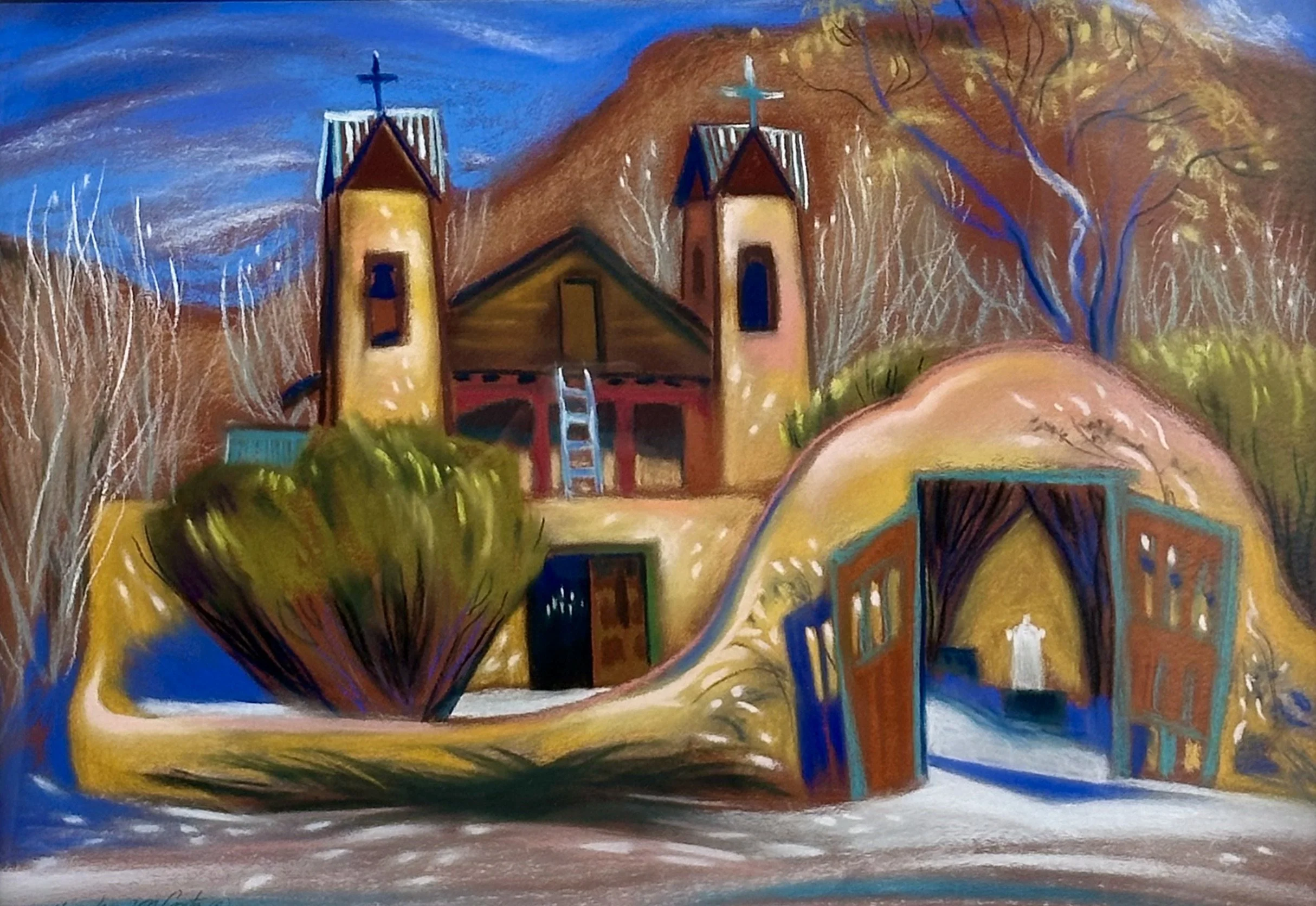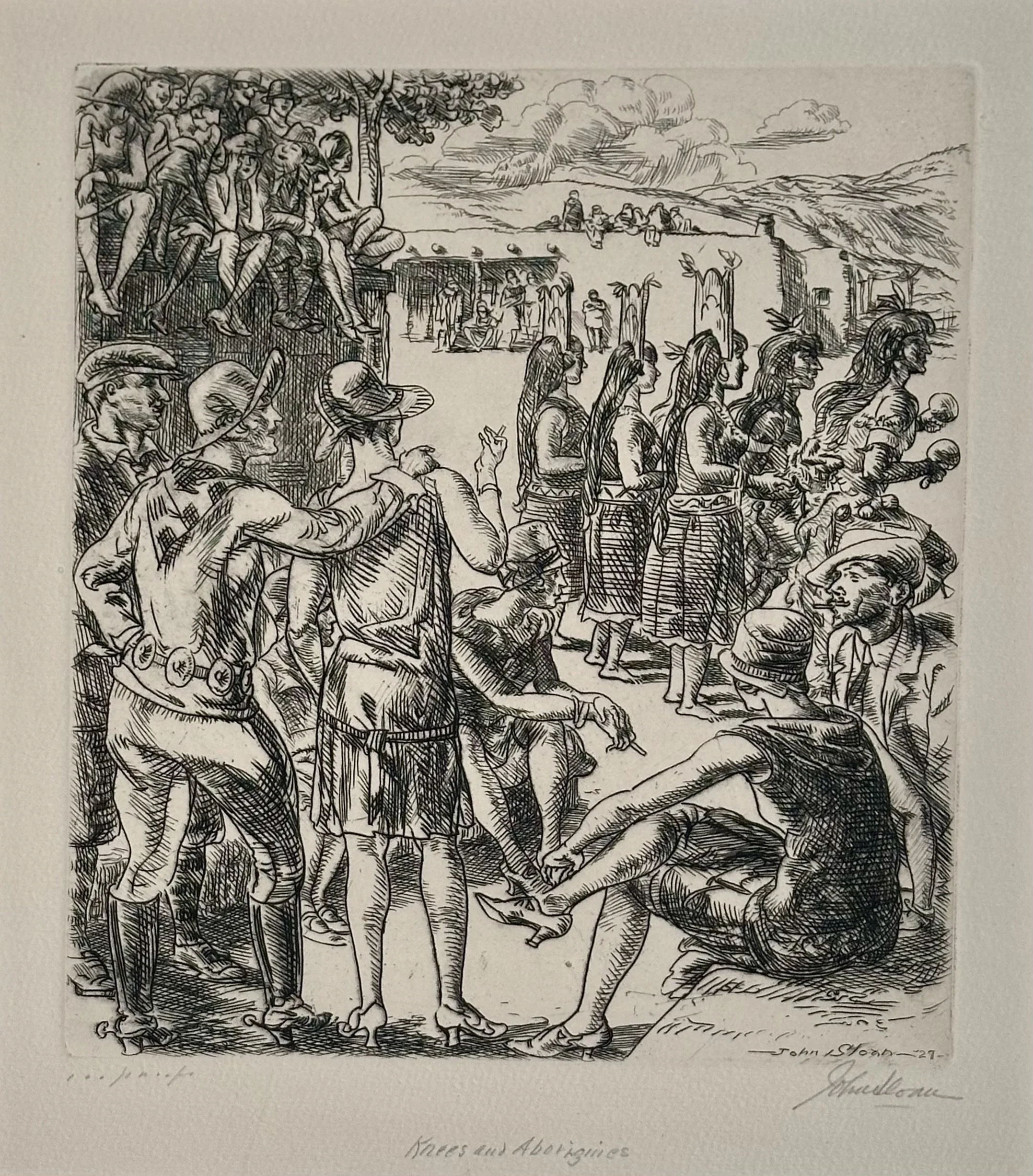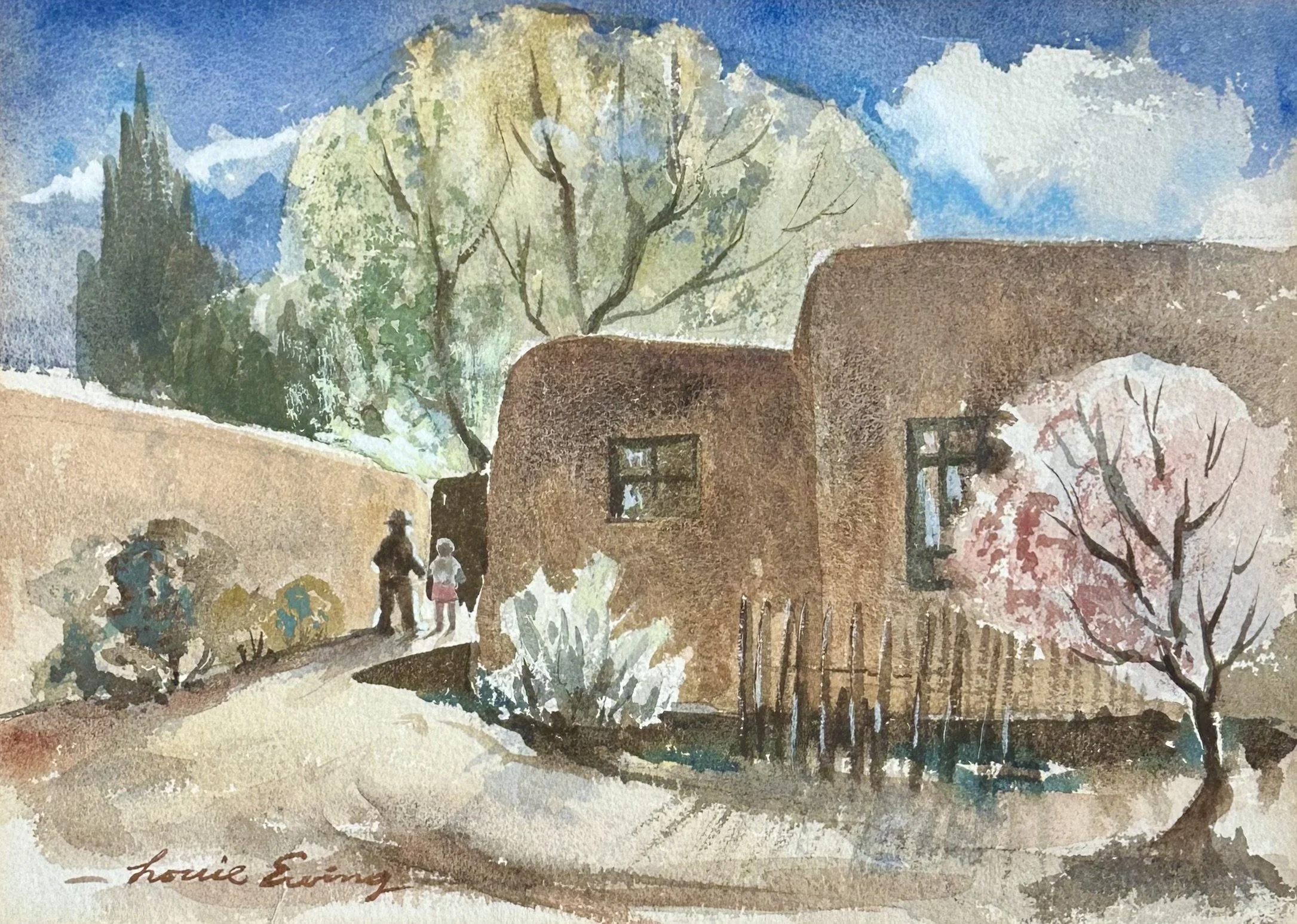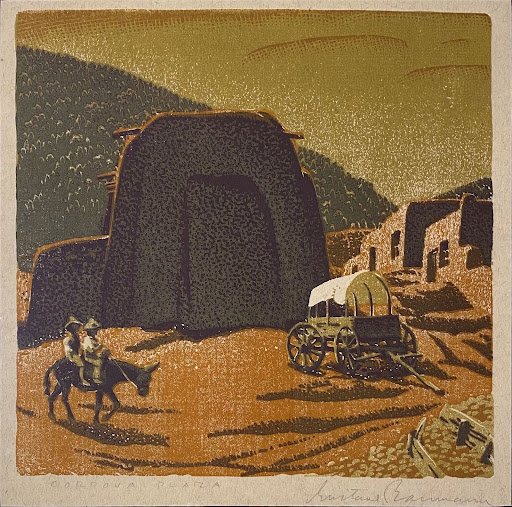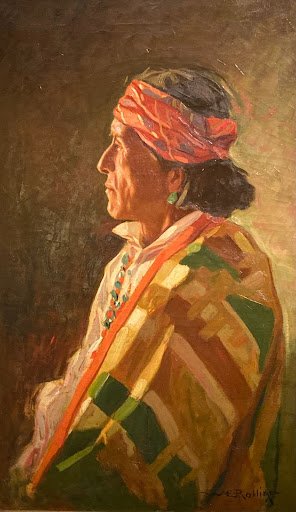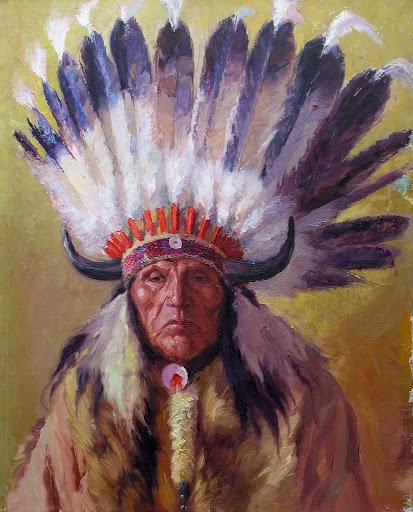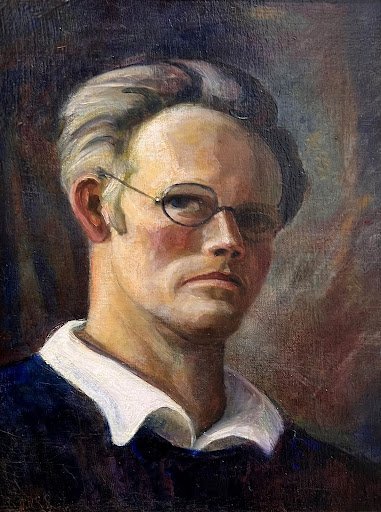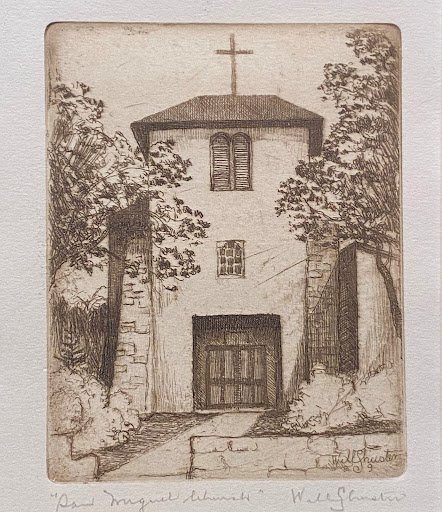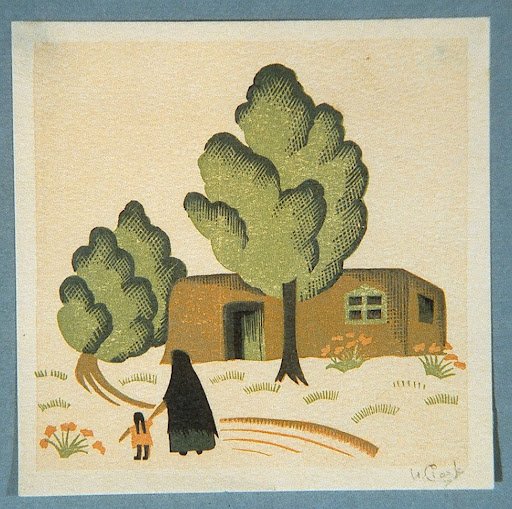The Collector’s Edition: 14 Works On Paper
/The Southwest has a rich heritage of many art forms—among them, works on paper. Artists from around the world have been drawn to this corner of the United States, bringing deep knowledge of woodcuts, watercolor, etchings, lithography, and more.
Explore a selection from the gallery’s array of works on paper and see if one calls out for your own collection.
Gene Kloss (1903-1996) - Untitled (Riders in the Dusk), watercolor, 17 x 23 ½ in.
Known for her mastery of etching and aquatint printmaking, Gene Kloss also worked in other media. Her eye for color is on full display in this moody yet electric watercolor scene.
Often referred to as the “master of aquatint”, Doel Reed was classically trained—but not in printmaking. He taught himself the art of aquatint, bringing it to his students at Oklahoma State University, which distinguished the school’s art program from others in the region.
Sherrie McGraw’s talent knows no bounds. An award-winning artist, revered instructor, and author of multiple respected books on painting, McGraw has reached heights so many living artists aspire to attain. From her work’s elegance and unmistakable polish, it’s easy to see why.
An accomplished watercolorist and artist in multiple media, Peter Hurd was inspired by the everyday lives of everyday New Mexicans. His work features portraits of friends and neighbors, local landscapes, and goings-on like the construction of a new mill.
The last artist to join the famed Taos Society of Artists in 1926, Kenneth Adams followed the same path to northern New Mexico trodden by many creatives of his day. However, Adams eventually associated himself more with the Albuquerque art scene, becoming a longtime instructor at the University of New Mexico.
A painter, printmaker, poet, and all-around creative spirit, T.C. Cannon packed a lot of living—and much beauty—into his short life. His artistic mentor, Fritz Scholder, greatly influenced his colorful works centered on the Native American experience, exemplified here in Turn of the Century Dandy.
Will Shuster, a member of the early 20th century artists’ group, Los Cinco Pintores, was a self-taught artist who enjoyed working in a variety of media. Some of his most cherished pieces are his etchings of famous scenes around Santa Fe, the city that became his beloved home.
Founder of Los Cinco Pintores, Jozef Bakos was a Santa Fe transplant from Buffalo, New York, who believed in creating art not only for collectors, but also for the common man. After permanently moving to the city in 1920, he became heavily involved in the art scene and local affairs, earning his place as a beloved figure in Santa Fe history.
One of the four founding members of the Cowboy Artists of America and its first president, George Phippen was a prominent figure in the mid-century resurgence of Western art. Known for his oils and watercolors with subtle humor, Phippen made a name for himself by commissioning works for calendars, Western movies, and more.
Betsy James is a lover of history, nature, art, and the culture of her native New Mexico. James combines her many passions in her art, which she creates from memory and imagination.
Raised in Argentina, Willard Clark first visited Santa Fe on a trip to California. Not only did he feel at home amongst the Spanish speakers, he also saw the opportunity to open a print shop, which he indeed opened and ran until the start of WWII. He then began working for Los Alamos National Laboratory—enjoying dual careers as a machinist and craftsman.
Sally Hayden Von Conta - Candlelight - Santuario de Chimayo, pastel, 13 x 18 ¼ in.
Sally Hayden Von Conta arrived in Santa Fe in 1986 following a 25-year career as an advertising industry art director in New York. Today, she is active in the Northern New Mexico arts community, creating vivid plein air pastels of local landscapes, churches, and city scenes.
John Sloan was a classically trained artist from Pennsylvania, famous for his city street scenes and urban landscapes. He is also credited with founding the Ashcan school of American art. Starting in 1918, he began spending summers in Santa Fe for the next thirty years. The merging of cultures in the budding art colony found its way into his work, seen here in Knees and Aborigines.
After following his art instructor to Santa Fe in 1935, Louie Ewing became involved in the WPA’s federal art project. When the government sent silk screen supplies, Ewing was tasked with mastering the art form to teach to new students. This led to Ewing’s renown as one of the first to work creatively with serigraphy, though this rare watercolor shows how his unique, illustrative style transcended media.
These pieces, and many others by these artists, are currently available at Nedra Matteucci Galleries in Santa Fe, New Mexico. For pricing, please call (505) 982-4631 or email inquiry@matteucci.com.
